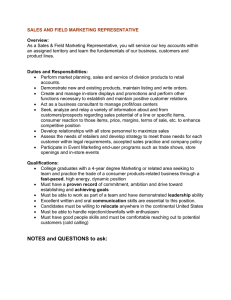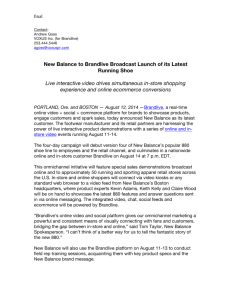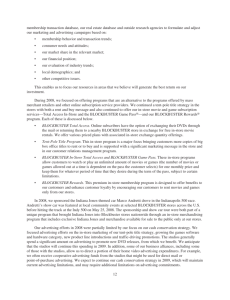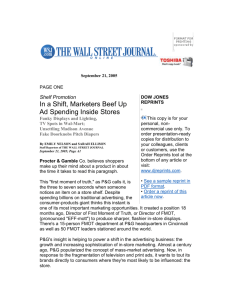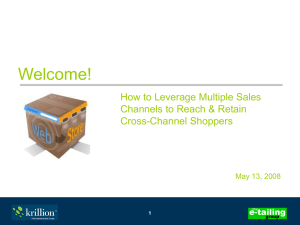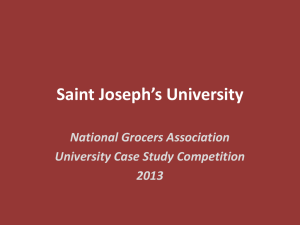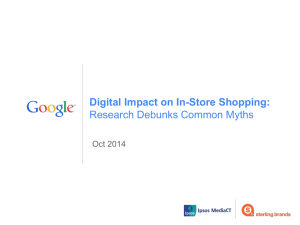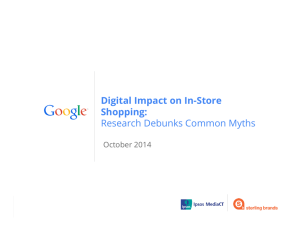Karen Glanz - NCCOR National Collaborative on Childhood Obesity
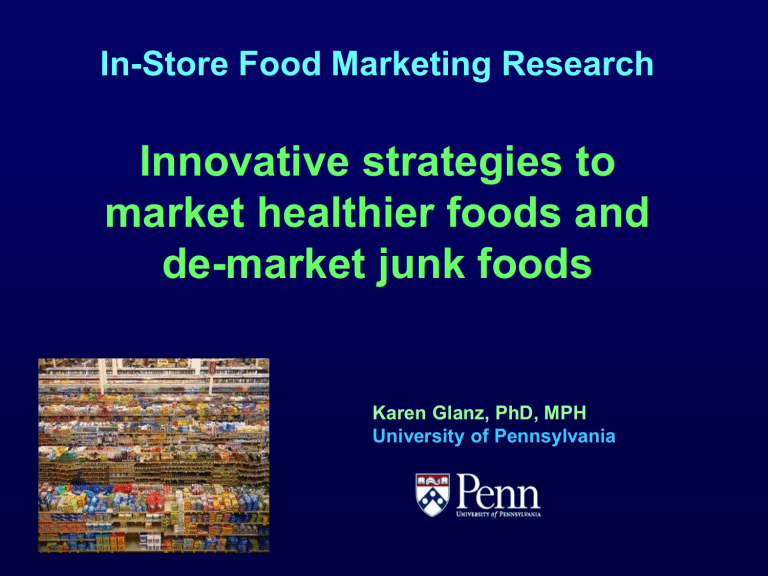
In-Store Food Marketing Research
Innovative strategies to market healthier foods and de-market junk foods
Karen Glanz, PhD, MPH
University of Pennsylvania
In-Store Food Marketing
Deserves attention as a unique focus – distinct from media marketing, digital marketing, and package labeling
Shoppers/buyers are usually adults, but they are often influenced by children
Significant Research Gaps
Little research on children related to IN-STORE marketing
Lack of representation of diverse population groups
(race/ethnicity, income, education)
Limited research on consumer behavior & health in real-life settings
C
ONCEPTUAL
F
RAMEWORK
:
Marketing
the 4 P’s
Price: coupons, specials, private label/store brands
* Promotion: In-store vs. out-of-store; signage; banners; tastetesting; shopper marketing”; single- vs. cross-brand promotion; store nutrition guidance systems
* Placement: Location of products in store; influence of assortments (quantity and variety); placement on shelves; quantity of facings/shelf-space; store layout
Products: Nutrient composition; packaging; health claims; targeting markets; effects of color and naming
* Most robust in-store marketing intervention opportunities
Pilot Study in progress
(The Food Trust, U of Penna, Temple University)
GOAL: evaluate impact of in-store marketing strategies to…
– Increase sales of healthy children’s foods
– Decrease sales of empty calories from energy-dense, lownutrient children’s foods
– Be profitable or cost-neutral to retailers/manufacturers
– Improve customer satisfaction & loyalty
Pilot test observational measure:
Grocery Marketing Environment Assessment
Product Category Focus
• Known role in excess weight or weight gain prevention
• Nutritional content {CALORIES} varies within category
• Child-relevant
• Strong brand competition
• Potential to be revenue-neutral for retailers
• Can increase healthy, decrease unhealthy, and/or shift the balance
Cereal
Milk
Beverages
(SSB/0-calorie)
Salty snacks
Frozen entrees
Frozen dairy desserts
Canned pasta
Frozen entrees
Healthy check-out aisles
Study Phases & Design
Review previous sales data (select products)
Consumer focus groups
Design interventions
Randomize stores (4 tx, 4 control)
Implement interventions 4-6 months
MEASURES
Weekly sales data, 1 yr pre, weekly, post-intvn
Intercept interviews
Observations
Grocery Marketing Environment Assessment pre-post
MEASUREMENT
Needed! Feasible measures of the
4 P’s for in-store food retail environments (measures exist for products)
Separate dimensions (e.g., placement, promotion)
Composite ‘scores’ to prompt and evaluate change
Maximize objectivity (e.g., use sales data)
Clear, feasible, reliable, disseminable
FIRST-GENERATION MEASURES
GroPromo
(Kerr, Sallis, Bromby & Glanz; in review 2011)
Measures placement and promotion for several categories of foods
Studied in 3 neighborhoods in San Diego
Good inter-rater reliability
Discriminant validity
Criterion validity (compared to customer receipts)
Health Responsibility Index (Dibbs/NCC, 2004 in UK)
Nutritional content of store brand (sodium, fat, sugar)
Labeling information
In-store promotions (shelf space, less healthy snacks @ checkouts
Customer information & advice
Overall Score
Research Methods
Balance between internal & external validity
Controlled experiments
Advantages: determine causal effects, manipulate variables of interest
Disadvantages : if done in lab settings they may differ from real-life situations
Field studies & natural experiments
Advantages : closer estimate of real-world effects
Disadvantages : expensive, hard to control external factors & events
Design Approaches
(micro to macro)
“Micro” includes laboratory experiments, often not in real-world settings
“ Meso” includes analogue stores, with experiments and/or observation
“Macro” is in real-world settings, ideally sustainable
Balancing pros & cons: Controlled experiments in real store settings
Uses advantages of previous two approaches
Where industry-researcher partnerships have the most potential payoff
From a public health perspective
Maximizes scientific rigor + real-world applicability
Can build on controlled/lab experiments
Better chance of dissemination & sustainability over tim e
Issues to consider and Opportunities to use
• Will need to tackle the unhealthy options
• Brand-based vs. health-based marketing
• Loyalty card users
• Slotting allowances
• Displays and signage – in-store triggers
• Audio and shopping-cart displays
• Information: on-packages and elsewhere
Challenges
Working together – supermarkets (want people to buy more) and public health researchers (want people to buy less of common products)
Consumer price and value sensitivity (wanting more food for their money)
Defining ‘categories’ for sales data isn’t as easy as it seems
Balancing industry’s profit motive, consumer desire for value, & health experts’ goal to reducing childhood obesity
Acknowledgments/Collaborators
University of Pennsylvania
Karen Glanz
Erica Davis
The Food Trust
Allison Karpyn
Stephanie Weiss
Temple University
Gary Foster
Alexis Wojtanowski
Collaborating Grocers
Brown’s ShopRite
Fresh Grocer
Funding: RWJF, HER, USDA
”An ounce of prevention is worth a pound of cure”
-
Ben Franklin
